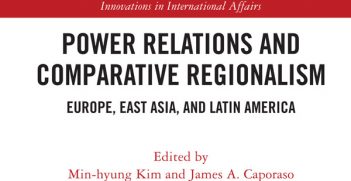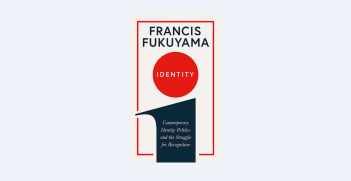How South Africa Works: And Must Do Better

South Africa has for decades been a special case, particularly since the 1994 advent of democracy, for commentators and scholars from multiple disciplines: political scientists, economists, sociologists and others.
This book, with its curious subtitle, is co-written by authors with extensive experience in their disciplines and the relevant subject matter. Their expertise is evident in their exegesis of the current difficulties facing the country: structural unemployment, slow economic growth, impacted political processes, state capture by vested interests, and poor government service-provision. It chronicles the major fluctuations in the political economy over the past 21 years, both in relation to macro trends and through individual case studies in agriculture, manufacturing and mining.
The text hardly provides an encouraging picture. In recent years economic growth has fallen well below official plans and experts’ expectations; investment, both foreign and domestic, has been unimpressive. Moreover, as the authors cogently establish, South Africa has in effect become two societies with two economies contributing to one of the most unequal societies in the world.
So much for the state of the nation; what about causes and prescriptions? Here the book is less compelling.
Given their expertise it is not surprising that the authors make comparative references to “success” countries whose progress might inspire South Africa. What is surprising is that less than four concerted pages are devoted to the comparative economies: the highly authoritarian Singapore (comprising mainly quotations from a former president) and the endemically corrupt and politically-troubled Malaysia. There is no doubting the economic miracles that have occurred in these countries, but the costs in relation to democracy, the rule of law and human rights are conveniently omitted from the picture.
Back in the South Africa, we are advised that, “Labour costs are too high and regulation inhibits employment. One of the remedies is to devise and implement an agenda for competitiveness to achieve higher rates of growth and inclusion.”
There is little doubt that regulatory certainty and a growth agenda would be a significant benefit in many respects. However there is no easy set of regulatory or other solutions to the predicaments facing South Africa, just as there are not in other countries including Australia. One of the particular challenges is to factor into any economic prescriptions for getting the settings right (and which country is doing that right now, one may ask?) the fact that South Africa is a democratic country, always an inhibitor of policy perfection. It also has one of the most sophisticated constitutions in the world yet the single reference to the constitution alludes to its ‘weaknesses’ without explanation of quite what they are.
South Africa is also subject to the immense forces of globalisation and no amount of wishful thinking will provide the choices for policy-makers which have for so long been diminishing in all economies, including the major ones, as international treaties and regulatory chill restrict democratic space and policy options.
Globalisation involves the denationalisation of trade, investment and capital flows, yet we tend to default to national political institutions and processes as the instruments for remedying economic ills without at the same time addressing the structures of globalisation itself.
One therefore anticipates eagerly the penultimate chapter titled “A Bridge to the Future?” This uses the automotive industry, which accounts for 12 per cent of South Africa’s exports, as a case study. Here a combination of technology, improved productivity from industry and protectionism and subsidies from the state, have produced a success story that might well be envied in Australia. It is, however, not clear from the authors’ analysis exactly where this takes us in relation to the must-do-better theme of the book.
While the prescriptions in this book do not indicate how South Africa can do better there are some optimistic signs in some of the case studies mentioned in the text. Perhaps chaos theory would suggest that where grand global or national narratives are deficient, local initiatives are most conducive to “doing better”. And here the authors provide some inspiring illustrations and grounds for hope.
Jeffrey Herbst and Greg Mills, How South Africa Works: And Must Do Better, Macmillan, 2015, ISBN-10: 1849046565.
Professor Laurence Boulle is a Professor of Law at the Australian Catholic University.





